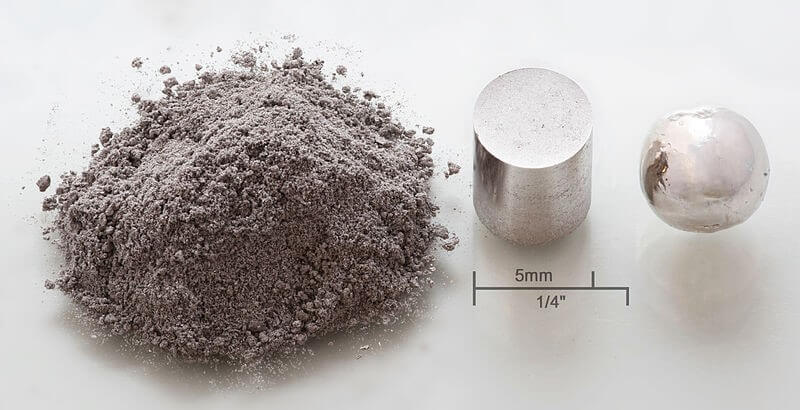The most expensive precious metal: it’s not gold
Because of gold’s versatility, its conductivity, durability and sleekness place it firmly among the five most expensive precious metals. Gold prices stand at over $1,950 per ounce at the time of publication – impressive, but nothing compared to rhodium.
Currently the most expensive precious metal and one of the rarest, the price per ounce of rhodium stands at $135/gram at the time of publication. So what makes it so expensive?
Rhodium does not react easily with oxygen, which makes it a precious metal and means it is a perfect catalyst, resistant to both corrosion and oxidation. Its overall hardness and high melting point of 1,964 degrees Celsius (3,567 degrees Fahrenheit) lands it among the platinum group metals alongside platinum, palladium, osmium, iridium and ruthenium.
Its ability to withstand water and air temperatures of up to 600 degrees Celsius (1,112 degrees Fahrenheit), and remain insoluble in most acids, makes rhodium very versatile for use in automobiles, aircraft, electrical connectors, and high-temperature thermocouples and resistance wires.
As the rarest metal of the platinum group, rhodium occurs at about 0.000037 parts per million in the Earth’s crust, while gold, in comparison, is found in an abundance of about 0.0013 parts per million, according to the Royal Society of Chemistry. Rodium is mainly produced in South Africa and Russia, often as a by-product of refining copper and nickel ores, which contain up to 0.1% of the precious metal. About 16 tons of rhodium are produced annually, with an estimated reserve of 3,000 tons.
Rhodium was discovered in 1803 by William Hyde Wollaston, an English chemist, who extracted the element from a piece of platinum ore from South America. The finding came shortly after Wollaston discovered another metal in the platinum group, palladium.
Usually found alongside deposits of platinum, rhodium was obtained from Wollaston’s sample by removing platinum and palladium, leaving behind a dark red powder that was treated with hydrogen gas to reveal the precious metal rhodium.
While the solid metal shines in a bright, reflective silver-white color, rhodium gets its name from the Greek “rhodon” meaning rose. Its name refers to the red color of the metal’s salts.
Despite its rarity and beauty, statistics from 2019 show that nearly 90 percent of rhodium demand came from the autocatalyst sector in the production of catalytic converters, an arguably ceremonial use for one of Earth’s rarest precious metals.
Physically backed ETF solves the problem
In the absence of futures trading on the stock exchange and the absence of Swedish players who buy and sell physical rhodium, it has been almost impossible for Swedish private individuals to trade in this precious metal.
In 2011, however, this all changed. Then Deutsche Bank in London launched an ETF, an exchange-traded fund, which is physically backed by rhodium. Like other ETFs, it can be bought and sold just like a stock.
db Physical Rhodium ETC (EUR)
This version is denominated in euros and is listed on Deutsche Börse (Xetra) in Germany.
This means that shares in this ETC can be traded through most Swedish banks and internet brokers, such as
DEGIRO
,
Nordnet
,
Aktieinvest
and
Avanza
.
About the Viking
With Viking’s signals, you have a good chance of finding the winners and selling in time. There are many securities. With Viking’s autopilots, price data, tables and stock prices, you can sort out the most interesting ETFs, shares, options, warrants, funds, etc.
Click here to see what Vikingen offers: Detailed comparison – Stock market program for those who want to become even richer (vikingen.se)













